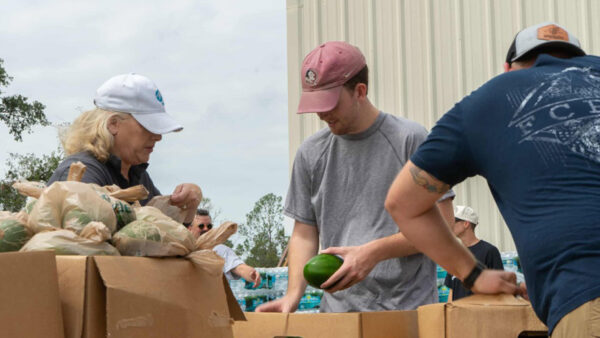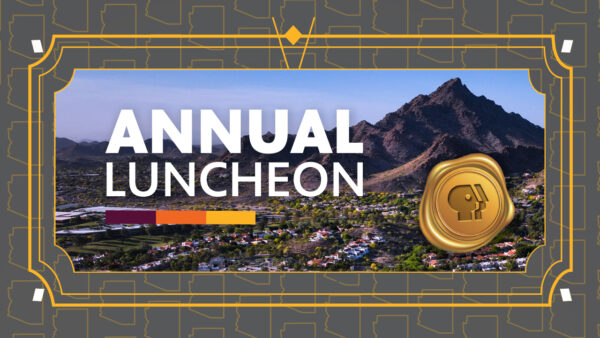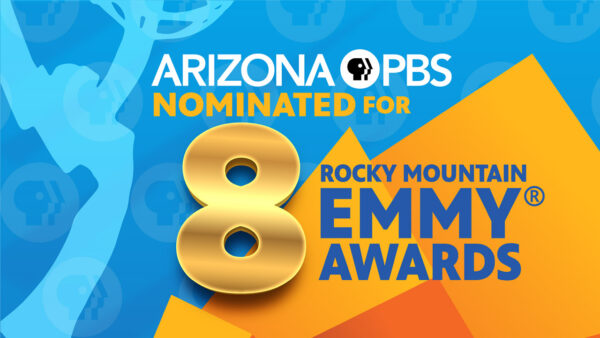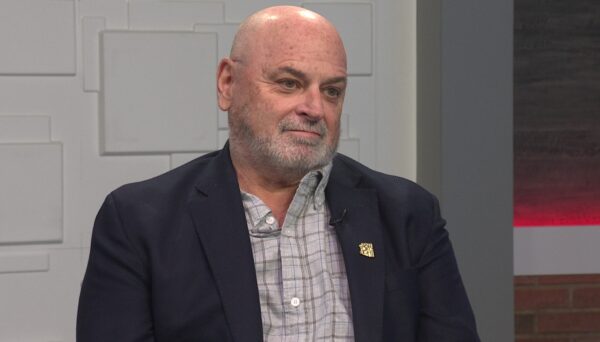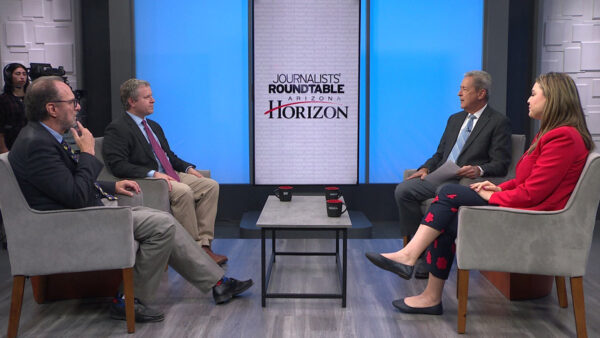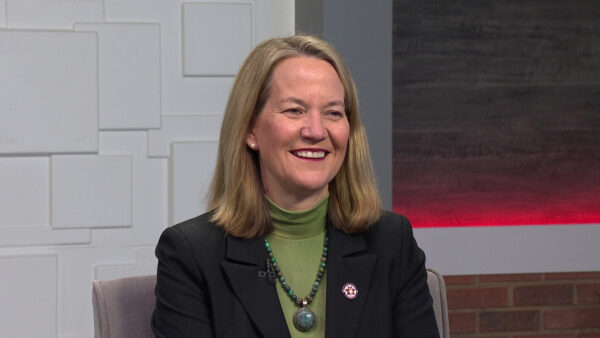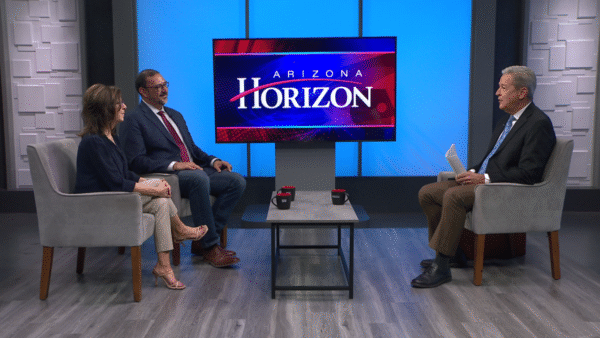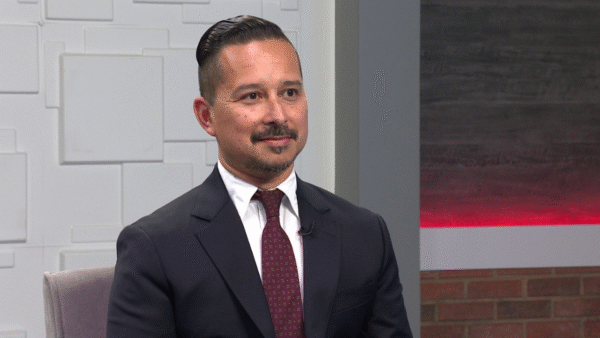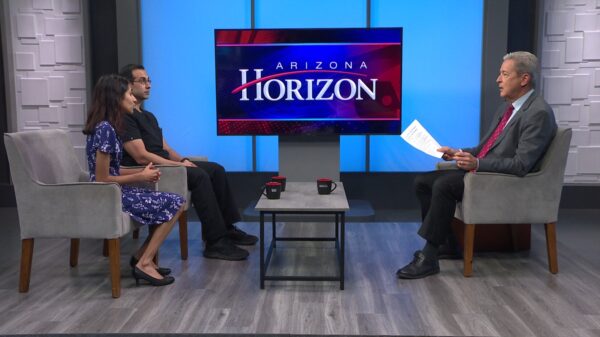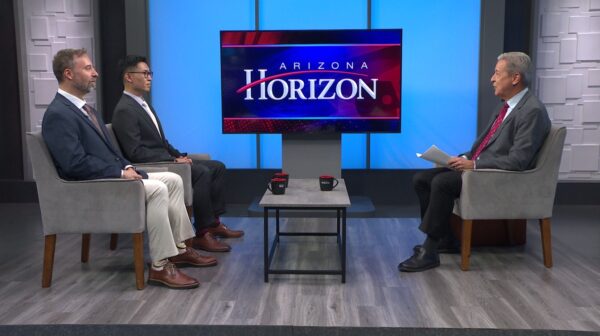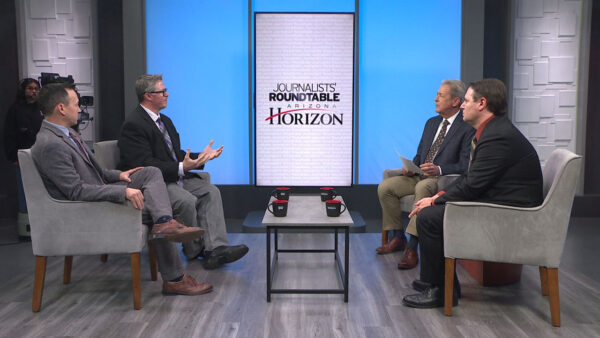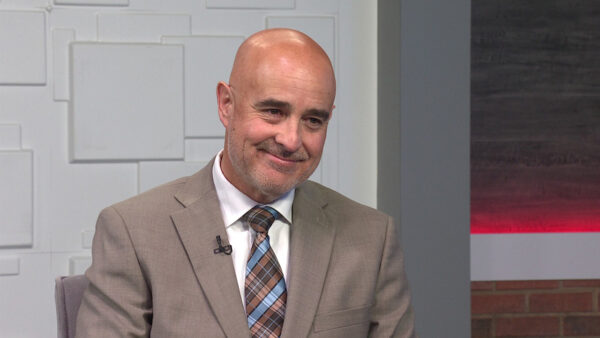Meet SPARK-E the robotic dog
Sept. 25
Teams at the Ira A. Fulton School of Engineering are creating specialized robotic dogs (one being named SPARK-E) that can take on the world’s most dangerous assignments. Unitree Go2. is an agile, quadrupedal robot that is designed for more than simply fetching sticks.
It’s equipped with advanced artificial intelligence cameras, LiDAR and a voice interface, and it’s learning how to assist with everything from search-and-rescue missions to guiding the visually impaired through complex environments. The LENS Lab team is incorporating AI models that enable the robot to understand and adapt to its environment, making it ready for real-world applications.
Ransalu Senanayake who is an Assistant Professor at the Ira A. Fulton Schools of Engineering joined “Arizona Horizon” alongside SPARK-E the robodog!
“…it has a depth sensor…it has a camera, and it has a microphone…all the motors,” Senanayake when asked about the number of sensors “SPARK-E” has.
Senanayake also explained how “SPARK-E” has similar sensors to that of WAYMO, a self-driving car service around the metro Phoenix region.
“…we are developing AI to do different tasks,” Senanayake said, “…search and rescue, developing support dogs for the impaired.”
Senanayake discussed how the search and rescue task would be used when it is too dangerous for a human, or animal to go. One situation he explained is if a building collapsed, releasing hazardous chemicals or gasses.
“…we don’t want people to go there,” Senanayake said, “…so we can safely send a robotic dog, and assess the situation, and detect the things that we want to really detect, and later send a human when it is safer.”
Senanayake and the rest of the team are able to observe what “SPARK-E” can see, but only if it moves its body. He also explained how there is the possibility to set up extra cameras for further observance.
“I say this is one of the basic robots, but we can use this for multiple purposes,” Senanayake said. “Then we have a humanoid robot, it has similar technology, but it can do different things than this robot.”

